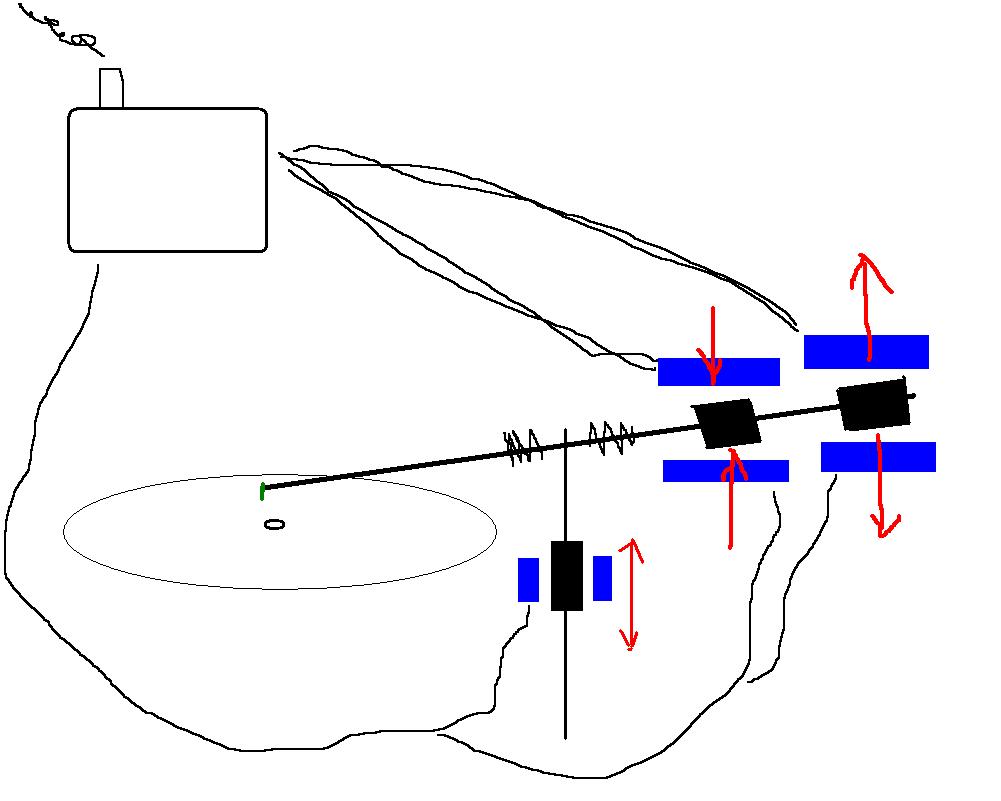|
fiogf49gjkf0d
It possible that those systems exist but I never heard about them and even I think it is too late to invent the thing for record playing but I still do like the idea.
Pretend a needle reads grooves. Depth and the right-left variation of the groove are variable and the needle, cantilever and attached coil change their position in space generating voltage. However, the movable part of the groove-reading mechanism experiences also the inertia that comes from its mass and speed. That inertia gets propagated to tonearm and to a very small degree tonearm itself behaves like a needle. The magnitude of this effect varies depend of the different criteria – I will not go into details now. Then there is the problem with record that creates very large tracing errors. The warped record dynamically changes VTF very aggressively and a record with off-center hole dynamically changes antiscating force. Those vertical and horizontal macro-disturbances added to the needle-cantilever-coil inertia create variable pressure of needle to groove, is any ways to deal with it?
I remember in my army time I drove a tank a few times and that tank has a system that was called “Duck”. It was called after duck (the bird) that is able to walk and to wave its bid ass but the duck’s head is able to maintain a more or less stable position. So, that tank had active electro-mechanical cannon’s axis stabilization system that allowed the tank to drive over erratic terrain but to maintain the main gun’s aim unchanged. Alternatively take a look what Kinetic Systems do.
http://www.kineticsystems.com/page156.html
It is an Active Feedback Vibration Control system that injects contra-force if detects any vibration. Combine what Kinetic Systems de with the “Duck” system and we will come close to what I am proposing. Approximately 5-6 years ago I proposed a conceptual idea of a tonearm with damping decoupled gyroscope on other end where each characteristic of tonearms would be managed just buy a precise positioning of set of gyroscopes. Let combine all of this together and see what we might come up with.
Pretend that we have a tonearm with a normal mechanical or liquid dumping and so on. The back of the tonearm has no weighs and has two independent electromagnetic sections. The first section surrounded with 3-4 electromagnets (on all sides). This is “write section” by means of witch the tonearm brain magnetizes the 3-4 electromagnets and inflicts to tonearm the VTF, antiscating, and also any transient vertical and horizontal anti-vibration and error-correction forces. The second section surrounded with 3-4 coils. This is “read section” that indicate to tonearm brain the exact position of tonearm in relation to the magnetizing forces of the first section. The tonearm brain is a piece of analog or digital logic that process all data, accept the preset defaults and generates an operational pattern for the whole tonearm.
The whole point of this idea is that the concept might provide absolutely problem-free LP reading disregarding any conditions – you can run you TT even upside down, not mention that it might easy do proper automated record playing, finding the beginning of record.

I did not see people go into this direction this type of tonearm VERY essay to do. With one more electromagnet on the tonearm base it would be very easy to do even automated VTA self-abasement. The “tonearm brain” might read an input from the phonostage and paling a calibration record with test signals it might recalibrate itself and to save for a given cartridge the setting of the best objective operational parameters. It might even recommend the best effective mass for a given cartridge that might be very easily to be re-set by adding mass to the headshell. The opportunities with this idea of Active Tonearm Monitoring System are truly endless… Rsg, Romy the Cat
|